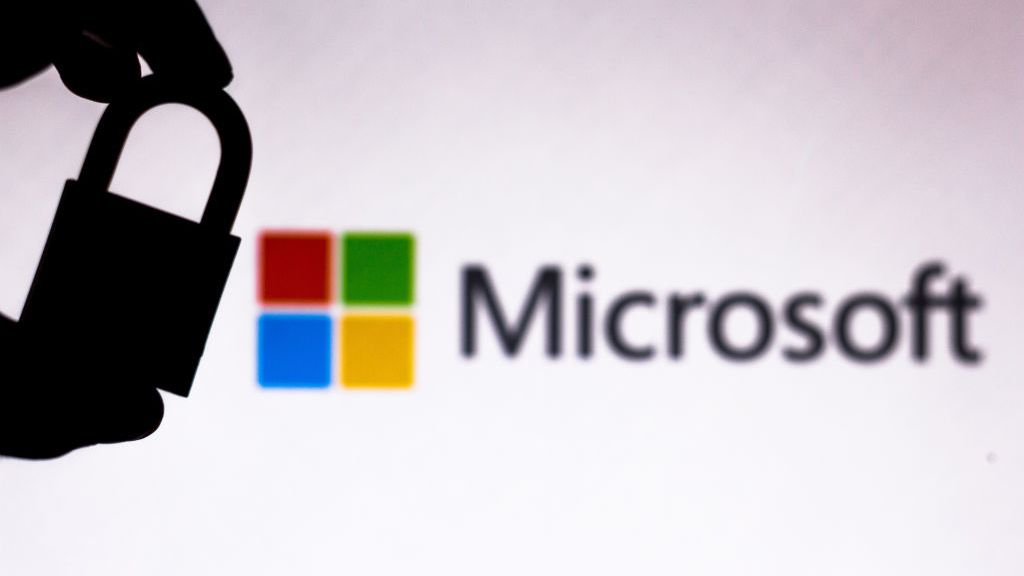Microsoft Defender drops "downpour" of false ransomware alerts on customers
System administrators made numerous reports of false-positive results being flagged for seemingly innocuous files and behaviours on Wednesday


Microsoft has confirmed that a code issue in Microsoft Defender for Endpoint has led to a wave of false-positive ransomware alerts for Microsoft customers.
Some system administrators reported issues on Wednesday afternoon involving numerous ransomware detections in their file systems.
Specifically, the erroneous alerts were titled ‘Ransomware behaviour detected in the file system’ and were triggered on ‘OfficeSvcMgr.exe.’, Microsoft said, with alerts occurring for around two hours between 14:39 - 16:50 (UTC).
It said a recent update that it deployed “within service components that detect ransomware alerts” introduced a code issue that led to false ransomware detections in the company’s security solution.
Microsoft has issued another code update that should correct the problem, according to Microsoft's Steve Sholz, principal technical specialist at Microsoft, updating customers via social media.
Sholz said Microsoft has updated its cloud logic to suppress the false-positive alerts and has re-processed a backlog of alerts to “completely remediate impact”. Affected customers should find the false-positives should clear from their portal without any intervention.
Microsoft is now investigating how the code error slipped through its testing and validation processes, with the hope that it will prevent similar issues from occurring again in the future.
Get the ITPro daily newsletter
Sign up today and you will receive a free copy of our Future Focus 2025 report - the leading guidance on AI, cybersecurity and other IT challenges as per 700+ senior executives
Microsoft customers reported that the errors began appearing after they updated their security definitions, which led to a “downpour of ransomware alerts” for some.
Microsoft Office files were commonly being flagged as ransomware, according to some reports, while other behaviours like deleting shadow copies also triggered false-positive alerts for some.
Elsewhere, users on Windows 11 have reported numerous problems since installing the March security update, including slow program load times after booting, File Explorer lagging, and a malfunctioning Windows Terminal, among other issues.
RELATED RESOURCE

Modernise your server infrastructure for speed and security
Infrastructure lifecycle automation paves the way for an adaptive, resilient organisation
IT Pro has contacted Microsoft to understand if it’s aware of the issues and what is being done to address them, but it did not immediately reply at the time of publication.
A total of 92 security vulnerabilities were fixed as part of the most recent March update, including a Windows 11 issue that prevented some users from erasing all their files after a system reset.
Microsoft has also been criticised by system administrators this year for releasing ‘broken’ patches that have led numerous organisations to forgo important security fixes out of fear they may cause more disruption than they solve.
Windows Server administrators said January’s security fixes “made the problem worse”, including creating an issue where they were unable to see the Active Directory environment in Microsoft Exchange, for example.

Connor Jones has been at the forefront of global cyber security news coverage for the past few years, breaking developments on major stories such as LockBit’s ransomware attack on Royal Mail International, and many others. He has also made sporadic appearances on the ITPro Podcast discussing topics from home desk setups all the way to hacking systems using prosthetic limbs. He has a master’s degree in Magazine Journalism from the University of Sheffield, and has previously written for the likes of Red Bull Esports and UNILAD tech during his career that started in 2015.
-
 Why keeping track of AI assistants can be a tricky business
Why keeping track of AI assistants can be a tricky businessColumn Making the most of AI assistants means understanding what they can do – and what the workforce wants from them
By Stephen Pritchard
-
 Nvidia braces for a $5.5 billion hit as tariffs reach the semiconductor industry
Nvidia braces for a $5.5 billion hit as tariffs reach the semiconductor industryNews The chipmaker says its H20 chips need a special license as its share price plummets
By Bobby Hellard
-
 Cleo attack victim list grows as Hertz confirms customer data stolen – and security experts say it won't be the last
Cleo attack victim list grows as Hertz confirms customer data stolen – and security experts say it won't be the lastNews Hertz has confirmed it suffered a data breach as a result of the Cleo zero-day vulnerability in late 2024, with the car rental giant warning that customer data was stolen.
By Ross Kelly
-
 ‘Phishing kits are a force multiplier': Cheap cyber crime kits can be bought on the dark web for less than $25 – and experts warn it’s lowering the barrier of entry for amateur hackers
‘Phishing kits are a force multiplier': Cheap cyber crime kits can be bought on the dark web for less than $25 – and experts warn it’s lowering the barrier of entry for amateur hackersNews Research from NordVPN shows phishing kits are now widely available on the dark web and via messaging apps like Telegram, and are often selling for less than $25.
By Emma Woollacott
-
 Healthcare systems are rife with exploits — and ransomware gangs have noticed
Healthcare systems are rife with exploits — and ransomware gangs have noticedNews Nearly nine-in-ten healthcare organizations have medical devices that are vulnerable to exploits, and ransomware groups are taking notice.
By Nicole Kobie
-
 Alleged LockBit developer extradited to the US
Alleged LockBit developer extradited to the USNews A Russian-Israeli man has been extradited to the US amid accusations of being a key LockBit ransomware developer.
By Emma Woollacott
-
 February was the worst month on record for ransomware attacks – and one threat group had a field day
February was the worst month on record for ransomware attacks – and one threat group had a field dayNews February 2025 was the worst month on record for the number of ransomware attacks, according to new research from Bitdefender.
By Emma Woollacott
-
 CISA issues warning over Medusa ransomware after 300 victims from critical sectors impacted
CISA issues warning over Medusa ransomware after 300 victims from critical sectors impactedNews The Medusa ransomware as a Service operation compromised twice as many organizations at the start of 2025 compared to 2024
By Solomon Klappholz
-
 Warning issued over prolific 'Ghost' ransomware group
Warning issued over prolific 'Ghost' ransomware groupNews The Ghost ransomware group is known to act fast and exploit vulnerabilities in public-facing appliances
By Solomon Klappholz
-
 The Zservers takedown is another big win for law enforcement
The Zservers takedown is another big win for law enforcementNews LockBit has been dealt another blow by law enforcement after Dutch police took 127 of its servers offline
By Solomon Klappholz